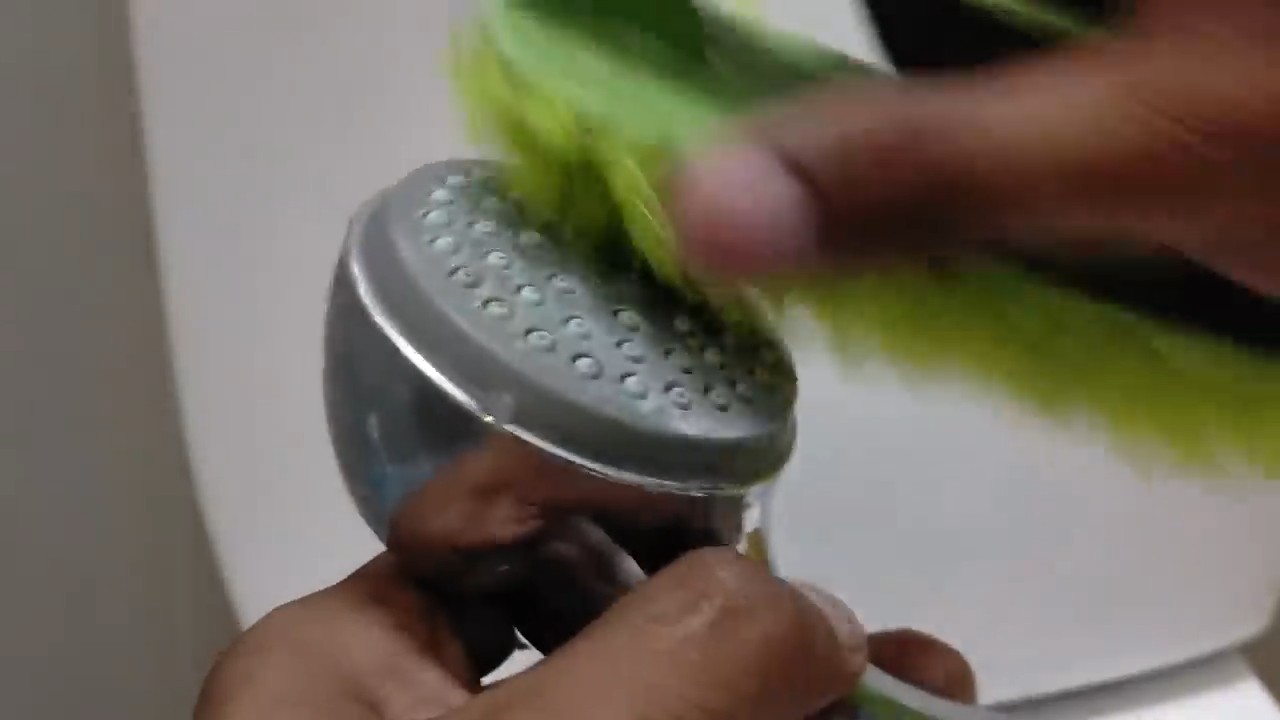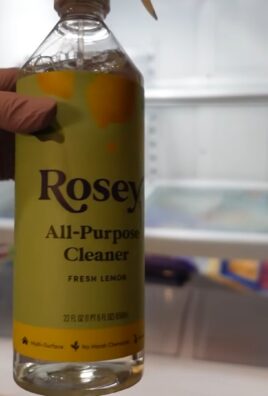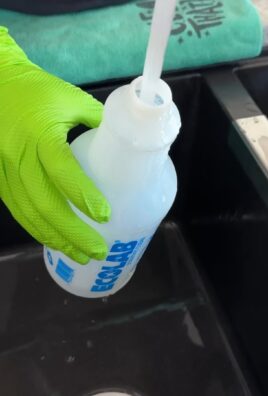Hydrogen peroxide cleaning hacks are about to become your new best friend! Are you tired of battling stubborn stains and lingering odors in your home? Imagine effortlessly banishing grime and germs with a simple, readily available solution. For generations, hydrogen peroxide has been a staple in households, initially prized for its antiseptic properties. But its cleaning prowess extends far beyond first aid!
Did you know that this unassuming liquid can tackle everything from brightening laundry to sanitizing your kitchen? I’m excited to share some incredible DIY cleaning tricks that will transform the way you approach household chores. These aren’t just quick fixes; they’re game-changers that will save you time, money, and a whole lot of elbow grease.
In today’s world, we’re all looking for effective and eco-friendly ways to keep our homes sparkling. Harsh chemicals can be expensive and harmful to our health and the environment. That’s where hydrogen peroxide cleaning hacks come in! They offer a safer, more sustainable alternative without compromising on cleaning power. So, get ready to unlock the hidden potential of this everyday essential and discover a world of cleaning possibilities!

DIY Cleaning Powerhouse: Unleashing the Magic of Hydrogen Peroxide
Hey there, fellow DIY enthusiasts! I’m always on the lookout for simple, effective, and budget-friendly ways to keep my home sparkling. And guess what? I’ve discovered the incredible cleaning power of hydrogen peroxide! This unassuming bottle, usually found in the first-aid aisle, is a true multi-tasker when it comes to cleaning. I’m going to share some of my favorite hydrogen peroxide cleaning hacks that will revolutionize your cleaning routine.
What You’ll Need: The Basics
Before we dive in, let’s gather our supplies. The beauty of hydrogen peroxide is that it’s often used with items you already have around the house.
* **Hydrogen Peroxide (3% Solution):** This is the standard concentration you’ll find in most stores. It’s safe for most surfaces when used correctly.
* **Spray Bottles:** I recommend having a few dedicated spray bottles just for hydrogen peroxide. Label them clearly to avoid any mix-ups!
* **Microfiber Cloths:** These are my go-to for cleaning. They’re absorbent, gentle, and reusable.
* **Baking Soda:** This is a fantastic natural cleaner and deodorizer that pairs well with hydrogen peroxide.
* **Vinegar:** Another cleaning staple! Be careful when mixing vinegar and hydrogen peroxide, as it can create peracetic acid, which can be irritating. I’ll show you how to use them safely and effectively.
* **Essential Oils (Optional):** If you want to add a pleasant scent to your cleaning solutions, essential oils are a great option. Lemon, tea tree, and lavender are some of my favorites.
* **Gloves:** While hydrogen peroxide is generally safe, it can irritate sensitive skin. Wearing gloves is always a good idea.
* **Eye Protection:** Especially when working with concentrated solutions or spraying overhead, protect your eyes.
* **Old Toothbrush:** Perfect for scrubbing grout and other hard-to-reach areas.
Hack 1: Disinfecting Kitchen Surfaces
The kitchen is a breeding ground for germs, so keeping it clean is essential. Hydrogen peroxide is a fantastic disinfectant for countertops, cutting boards, and sinks.
Step-by-Step Instructions:
1. **Prepare the Surface:** Clear the countertop or sink of any food debris or clutter.
2. **Spray with Hydrogen Peroxide:** Generously spray the surface with hydrogen peroxide.
3. **Let it Sit:** Allow the hydrogen peroxide to sit for at least 5-10 minutes to disinfect. This dwell time is crucial for killing bacteria and viruses.
4. **Wipe Clean:** Wipe the surface clean with a damp microfiber cloth.
5. **Dry the Surface:** Use a clean, dry microfiber cloth to dry the surface. This helps prevent water spots and further inhibits bacterial growth.
Important Note: Always test hydrogen peroxide on an inconspicuous area first, especially on delicate surfaces like marble or granite. While it’s generally safe, it’s better to be cautious.
Hack 2: Whitening Laundry and Removing Stains
Say goodbye to harsh bleach! Hydrogen peroxide is a gentle yet effective alternative for whitening laundry and removing stains.
Step-by-Step Instructions:
1. **For Whitening:** Add 1 cup of hydrogen peroxide to your washing machine along with your regular detergent. This will help brighten whites and remove dinginess.
2. **For Stain Removal:**
* **Pre-Treat the Stain:** Pour a small amount of hydrogen peroxide directly onto the stain.
* Let it Sit: Allow it to sit for 10-15 minutes. For stubborn stains, you can gently rub the fabric together.
* Launder as Usual: Wash the garment as usual with your regular detergent.
3. **Check Before Drying:** Before putting the garment in the dryer, make sure the stain is completely gone. The heat from the dryer can set the stain, making it harder to remove later. If the stain is still visible, repeat the process.
Important Note: Always test hydrogen peroxide on an inconspicuous area of the fabric first to ensure it doesn’t cause discoloration. Avoid using it on delicate fabrics like silk or wool.
Hack 3: Cleaning Grout
Grime and mildew love to hide in grout lines, making them look dingy and discolored. Hydrogen peroxide, combined with baking soda, is a powerful grout cleaner.
Step-by-Step Instructions:
1. **Make a Paste:** Mix hydrogen peroxide and baking soda to form a thick paste. The consistency should be similar to toothpaste.
2. **Apply the Paste:** Apply the paste to the grout lines using an old toothbrush or a grout brush.
3. **Let it Sit:** Allow the paste to sit for 5-10 minutes. This gives the hydrogen peroxide and baking soda time to work their magic.
4. **Scrub the Grout:** Scrub the grout lines with the toothbrush or grout brush. You’ll see the grime and mildew start to lift away.
5. **Rinse with Water:** Rinse the grout lines with clean water.
6. **Dry the Area:** Use a clean cloth to dry the area.
Important Note: For heavily soiled grout, you may need to repeat the process. You can also try using a stronger concentration of hydrogen peroxide, but be sure to test it on an inconspicuous area first.
Hack 4: Disinfecting Toothbrushes and Retainers
Our toothbrushes and retainers can harbor bacteria, so it’s important to keep them clean. Hydrogen peroxide is a safe and effective way to disinfect them.
Step-by-Step Instructions:
1. **Rinse with Water:** Rinse your toothbrush or retainer with water to remove any debris.
2. **Soak in Hydrogen Peroxide:** Pour a small amount of hydrogen peroxide into a cup and soak your toothbrush or retainer for 5-10 minutes.
3. **Rinse Thoroughly:** Rinse the toothbrush or retainer thoroughly with water before using it.
Important Note: Don’t soak your toothbrush or retainer in hydrogen peroxide for too long, as it can damage the bristles or the material of the retainer.
Hack 5: Cleaning Mirrors and Glass
Achieve streak-free shine on your mirrors and glass surfaces with hydrogen peroxide.
Step-by-Step Instructions:
1. **Dilute Hydrogen Peroxide (Optional):** While you can use hydrogen peroxide straight, diluting it with water (1:1 ratio) can help prevent streaking, especially on larger surfaces.
2. **Spray the Surface:** Lightly spray the mirror or glass surface with hydrogen peroxide.
3. **Wipe Clean:** Wipe the surface clean with a microfiber cloth. Use a clean, dry section of the cloth to buff the surface for a streak-free shine.
Important Note: Avoid spraying hydrogen peroxide directly onto the frame of the mirror, especially if it’s made of wood or other delicate materials.
Hack 6: Freshening Up Your Cutting Boards
Cutting boards, especially wooden ones, can absorb odors and harbor bacteria. Hydrogen peroxide can help freshen them up and keep them clean.
Step-by-Step Instructions:
1. **Clean the Cutting Board:** Wash the cutting board with soap and water to remove any food debris.
2. **Spray with Hydrogen Peroxide:** Generously spray the cutting board with hydrogen peroxide.
3. **Let it Sit:** Allow the hydrogen peroxide to sit for 5-10 minutes.
4. **Rinse with Water:** Rinse the cutting board thoroughly with water.
5. **Dry the Cutting Board:** Allow the cutting board to air dry completely.
Important Note: For wooden cutting boards, you can also rub a small amount of mineral oil onto the surface after it’s dry to help prevent cracking and drying out.
Hack 7: Cleaning the Toilet Bowl
Hydrogen peroxide can help disinfect and deodorize your toilet bowl.
Step-by-Step Instructions:
1. **Pour Hydrogen Peroxide into the Bowl:** Pour about 1/2 cup of hydrogen peroxide into the toilet bowl.
2. **Let it Sit:** Allow it to sit for at least 30 minutes, or even overnight for a deeper clean.
3. **Scrub the Bowl:** Scrub the bowl with a toilet brush to loosen any stains or buildup.
4. **Flush the Toilet:** Flush the toilet to rinse away the hydrogen peroxide and any debris.
Important Note: For stubborn stains, you can try adding a cup of baking soda to the toilet bowl along with the hydrogen peroxide. Let it fizz for a few minutes before scrubbing.
Hack 8: Deodorizing Sponges and Dishcloths
Sponges and dishcloths can quickly become smelly and harbor bacteria. Hydrogen peroxide can help deodorize and disinfect them.
Step-by-Step Instructions:
1. **Rinse with Water:** Rinse the sponge or dishcloth with water to remove any food debris.
2. **Soak in Hydrogen Peroxide:** Soak the sponge or dishcloth in a solution of hydrogen peroxide and water (1:1 ratio)

Conclusion
So, there you have it! Unlocking the power of hydrogen peroxide for cleaning is a game-changer for any household. It’s not just about saving money; it’s about embracing a more sustainable and effective way to tackle everyday messes. From banishing stubborn stains to sanitizing surfaces, the versatility of this humble solution is truly remarkable. We’ve explored a range of applications, demonstrating how hydrogen peroxide cleaning hacks can simplify your chores and leave your home sparkling.
But the beauty of DIY lies in its adaptability. Feel free to experiment with different concentrations and combinations to find what works best for your specific needs. For instance, if you’re dealing with particularly tough mildew in the bathroom, try adding a few drops of tea tree oil to your hydrogen peroxide solution for an extra boost of antifungal power. Or, if you’re cleaning delicate fabrics, dilute the hydrogen peroxide even further to prevent any potential discoloration. You can also infuse your cleaning solutions with essential oils like lemon or lavender for a more pleasant scent.
Remember, safety is paramount. Always test hydrogen peroxide on an inconspicuous area before applying it to larger surfaces, and wear gloves to protect your skin. And while hydrogen peroxide is generally safe, it’s crucial to keep it out of reach of children and pets.
Ultimately, the best way to discover the full potential of hydrogen peroxide cleaning is to try it yourself. We’ve provided you with the knowledge and inspiration; now it’s time to put it into practice. We are confident that you’ll be amazed by the results.
Don’t just take our word for it! We encourage you to embark on your own hydrogen peroxide cleaning adventures and share your experiences with us. What unexpected uses did you discover? What variations did you try? What challenges did you overcome? Your insights could help other readers unlock even more cleaning secrets. Share your tips, tricks, and before-and-after photos in the comments section below. Let’s build a community of savvy cleaners who are passionate about harnessing the power of hydrogen peroxide for a cleaner, healthier home. We are eager to hear your success stories and learn from your experiences. Together, we can revolutionize the way we clean!
Frequently Asked Questions (FAQs)
Is hydrogen peroxide safe to use around children and pets?
Hydrogen peroxide is generally considered safe when used properly, but it’s crucial to exercise caution around children and pets. Always store hydrogen peroxide out of their reach, preferably in a locked cabinet. When using it for cleaning, ensure that the area is well-ventilated and that children and pets are kept away until the surface is completely dry. While hydrogen peroxide is non-toxic in low concentrations, ingestion can cause irritation and discomfort. If a child or pet accidentally ingests hydrogen peroxide, contact a medical professional or veterinarian immediately.
What is the difference between different concentrations of hydrogen peroxide?
Hydrogen peroxide is available in various concentrations, typically ranging from 3% to 35%. The 3% solution is the most common and readily available in drugstores and supermarkets. It’s suitable for most household cleaning tasks and is generally considered safe for topical use. Higher concentrations, such as 35%, are typically used for industrial purposes and require extreme caution. They can cause severe burns and should only be handled by trained professionals. For cleaning purposes, the 3% solution is usually sufficient. If you need a stronger solution, you can carefully increase the concentration, but always test it on an inconspicuous area first and wear appropriate protective gear.
Can hydrogen peroxide be used on all surfaces?
While hydrogen peroxide is a versatile cleaner, it’s not suitable for all surfaces. It can potentially damage or discolor certain materials, such as delicate fabrics, painted surfaces, and some metals. Always test hydrogen peroxide on an inconspicuous area before applying it to larger surfaces. Avoid using it on natural stone, such as marble or granite, as it can etch the surface. It’s also best to avoid using hydrogen peroxide on dark-colored fabrics, as it can cause fading. When in doubt, consult the manufacturer’s instructions for the surface you’re cleaning.
How should I store hydrogen peroxide?
Hydrogen peroxide should be stored in a cool, dark place, away from direct sunlight and heat. Exposure to light and heat can cause it to decompose and lose its effectiveness. It’s also important to store it in its original container, as the opaque bottle helps to protect it from light. Keep the container tightly sealed to prevent evaporation. Properly stored hydrogen peroxide can last for several months, but it’s best to use it within a year of opening. If you notice that the solution is no longer bubbling when applied to a surface, it may have lost its potency.
Can I mix hydrogen peroxide with other cleaning products?
It’s generally not recommended to mix hydrogen peroxide with other cleaning products, especially bleach. Mixing hydrogen peroxide with bleach can create toxic chlorine gas, which can cause respiratory irritation and other health problems. It’s also best to avoid mixing hydrogen peroxide with vinegar, as this can create peracetic acid, which is also potentially harmful. When using hydrogen peroxide for cleaning, use it alone or with water. If you want to add other ingredients, such as essential oils, make sure they are compatible with hydrogen peroxide and won’t create any harmful reactions.
How can I use hydrogen peroxide to remove stains from laundry?
Hydrogen peroxide is an effective stain remover for many types of stains, including blood, grass, and food stains. To use it for laundry, simply pour a small amount of 3% hydrogen peroxide directly onto the stain and let it sit for 10-15 minutes. Then, blot the stain with a clean cloth and wash the garment as usual. For stubborn stains, you can soak the garment in a solution of hydrogen peroxide and water for a few hours before washing. Always test hydrogen peroxide on an inconspicuous area of the fabric first to ensure that it doesn’t cause discoloration. Avoid using it on delicate fabrics, such as silk or wool.
How can I use hydrogen peroxide to clean my bathroom?
Hydrogen peroxide is a great cleaner for bathrooms, as it can kill bacteria and fungi and remove soap scum and mildew. To clean your bathroom with hydrogen peroxide, simply spray it onto surfaces such as the toilet, sink, shower, and bathtub. Let it sit for 10-15 minutes, then wipe it clean with a damp cloth. For stubborn mildew, you can mix hydrogen peroxide with baking soda to create a paste. Apply the paste to the mildew, let it sit for a few hours, then scrub it away with a brush.
Is hydrogen peroxide environmentally friendly?
Yes, hydrogen peroxide is considered an environmentally friendly cleaning agent. It decomposes into water and oxygen, leaving no harmful residues behind. This makes it a much safer and more sustainable alternative to many conventional cleaning products that contain harsh chemicals. By using hydrogen peroxide for cleaning, you can reduce your environmental impact and create a healthier home for yourself and your family.




Leave a Comment